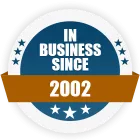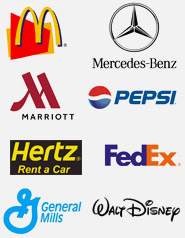How to Clean Roof
How to Clean Roof Using Pressure Washer?
Keeping roofs clean and dirt-free is important to prevent serious damage to your home walls and ceilings, especially during rains. A clean and clog-free roofing system will ensure proper drainage and prevent leakage caused by accumulated water. Roofs can attract algae, mold, and moss pretty fast. These are fungal growths that do not wash off in the rain but rather thrive on it and can become a serious problem that can leave your roof damaged. Scraping and scrubbing won’t help, as they can cause cracks and break the shingles. Pressure washing is the best option available.
Why Use Pressure Washers?
The stubborn and tough deposits, dirt, moss, and algae can easily be dislodged and removed using a pressure washer with the right pressure levels. A different school of thought believes that using pressure washers for roof cleaning can damage the roof tiles and other parts. The fact remains that pressure washers must be used with caution on all types of surfaces. When done correctly, the advantages far outweigh the risks of failing to take action against invasive moss growth on your roof. Pressure washers have been acknowledged as one of the most effective ways of cleaning roofs, provided the instructions are carefully followed.
Cleaning Roof Using a Pressure Washer
A pressure washer can make roof cleaning easy and faster when compared to conventional methods of cleaning. You can expect exceptional results, if you follow the operational instructions meticulously.
How a Pressure Washer Works?
Pressure per square inch (PSI) and gallons per minute (GPM) are two key terms associated with pressure washing. A pressure washer draws water from a hose pipe and delivers it through a special nozzle at high pressure, through an electric- or gas-powered engine. The combined effort of the pump and the nozzle ensures that water is ejected at a high pressure that can easily remove dirt, moss, grime, and other stubborn deposits on the roof. A machine with a regulated pressure level and moderate flow rate is ideal for cleaning roof.
Setting Up the Machine
Before you start roof cleaning operations, the pressure washer must be set up to deliver the right pressure level. Secure all connections and check other important things like oil level and water flow before you start cleaning. Low pressure setting will ensure that you can get rid of the upper growth spores and mold on the surface without destroying your roof shingles.
Adding to the Machine’s Cleaning Power
Never use bleach to remove stubborn dirt marks, as it can easily discolor walls and siding when the residual water streaks down. It can also be harmful to plants along the way. Use an eco-friendly cleaning solution to get faster and superior cleaning results without causing any damage to roof, walls, or plants.
The Process
Start by removing all vegetation and tree branches that may be hanging on the roof. Test the power of the pressure washer to make sure the output is ideal for the roof. Begin from a corner of the roof and work your way down, from top to bottom. If you notice any spots that were missed during the initial cleaning, focus on them during the final phase of washing.
Tips
- Using the right accessories with the pressure washer can improve ease of use and deliver enhanced results.
- Choosing a reputable and top-quality pressure washer will give you the best value for your investment.
- Let an expert handle the job, if you are not sure how to use pressure washers for roof cleaning.
Roof cleaning with power washers can be quite challenging. Using a user-friendly cleaning machine with the right specifications and accessories can help you get the best results from the cleaning application.


